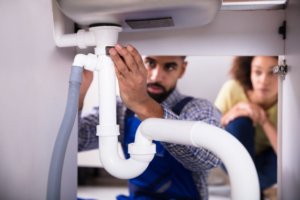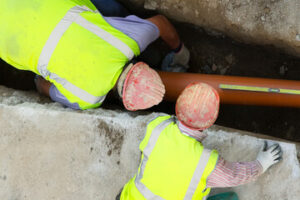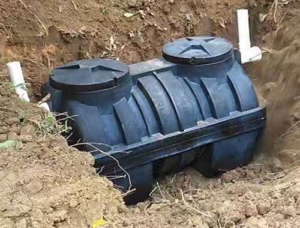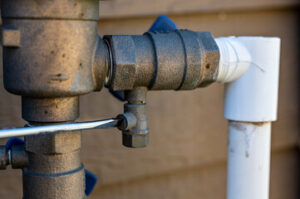Drain Cleaning – How to Get Rid of Blocked Drains and Prevent Foul Odors
Regular drain cleaning keeps debris like hair, soap scum, food particles, and grease from building up in drains and leading to slow-running or blocked pipes. It also helps prevent foul odors from spreading throughout the home.
Chemical drain cleaners work quickly on most minor clogs. However, for more stubborn issues, you may want to consider an oxidizing or caustic drain cleaner. Contact Drain Cleaning Aurora, CO now!

This thick liquid does triple duty to dissolve tough clogs, prevent new ones from forming, and remove unpleasant odors. It is safe for septic systems, PVC, plastic, and copper pipes (although it may damage some rubber drainpipes). Liquid-Plumr’s directions recommend pouring 16 ounces down the drain or garbage disposal. It should sit for 15 minutes or until the drain is clear. Then, flush away any leftover gel with hot water.
Some liquid drain cleaners contain caustic chemicals that can damage your pipes, especially if they sit for too long or are used more often than recommended by the manufacturer. It is best to choose a natural drain cleaner when possible, such as baking soda and vinegar. However, there are times when even these gentle options won’t work. In this case, a professional plumber will have tools in their arsenal that can help to break up and dislodge stubborn blockages without damaging your drainpipes.
Liquid drain cleaners that use acids, such as sulfuric acid, can also be dangerous to your pipes. These chemicals create heat when they interact with water, which can melt or burn anything that is clogging the pipe. They can also eat through the inside of your pipes, leading to leaks and bursts down the line. These kinds of liquid cleaners should only be used when all other methods fail.
If you do end up needing a chemical drain cleaner, read the instructions carefully and follow them exactly to reduce your risk of injury or pipe damage. Also, never mix acidic drain cleaners with bleach or other household cleaners, as they can cause dangerous chemical reactions.
If liquid drain cleaners don’t work for you, try a homemade version with baking soda and vinegar. If this does not fix the problem, it is time to call a plumber for professional help. Local plumbers have the tools to get rid of even the most stubborn clogs without damaging your drainpipes or your plumbing system. They can also assess whether there is a deeper problem that needs to be addressed, such as a broken sewer pipe or septic tank.
Bio-Clean
Bio-Clean is a mix of natural bacteria and enzymes that digest organic waste found in your drain pipes, helping prevent clogs. It is safe for people, plumbing and the environment. Unlike chemical drain cleaners, it does not generate heat or fumes, and will not harm your pipes. It is available in liquid or dry powder form, both of which work equally well and can be purchased at any hardware store.
The bacterial solution remains dormant until mixed with water and then goes to work consuming the grease, hair, soap scum, food particles and cotton that tend to clog drain lines. Each bacterium consumes its weight of debris every 30 minutes and multiplies until it has devoured all of the waste. The result is that all of the organic material will be converted into carbon dioxide and mineral ash, leaving your drains clean and clear.
While the bacterial mixture works quickly, it may take several treatments to clear your drains entirely, especially if you are dealing with an extreme blockage. Also, it cannot digest inorganic materials, such as plastic pipe, so you will still need to use a plumber’s snake to remove the larger sections of the clog.
The initial treatment should be made when the drain will not be used for 6 to 8 hours (at bedtime, for example). This allows the bacterial solution time to enter the rest of the drain line and begin its job of eliminating the gunk that builds up in your pipes.
Bio-Clean can be used to treat all kinds of drains and sewer pipes, including kitchen sinks, lavatories, bath tubs and showers, floor drains, garbage disposal odors, septic systems, septic tank lids, basement sumps, and sewage ejector sumps. It can also be used for outdoor drains and sewer lift stations.
Another benefit of the bacterial drain cleaner is that it is much less messy than other chemical products. This is particularly helpful for commercial clients, who do not want to risk damaging their customers’ property with chemicals. Moreover, the bacterial solution is safer for the plumber to handle than acidic and alkaline drain cleaners, which can burn a careless plumber’s hands during the mixing and application process.
Baking Soda & Vinegar
The simple mixture of baking soda (sodium bicarbonate) and vinegar is a powerful, eco-friendly drain cleaner that works well for removing most minor clogs. The combination of these two common household ingredients creates a chemical reaction that can dislodge food particles, grease, soap scum, and coffee grounds—all of which can contribute to blocked drains. This homemade drain cleaner is inexpensive, easy to find, and safe for pipes and septic systems.
The chemical reaction that occurs when these two substances are mixed creates carbon dioxide bubbles, which can help to break down a wide variety of organic materials that build up in the drain and garbage disposal. Baking soda can also act as a mild abrasive, helping to remove stuck-on gunk and grime.
For best results, add a half cup of baking soda to your drain followed by a half cup of white vinegar. Allow the mixture to sit for about 15 minutes, letting the bubbles work their magic on your clog. Then, slowly pour a kettle or pot of boiling water down the drain to flush away the baking soda-vinegar solution and any loosened debris.
If the clog persists, try repeating the process or try using a more abrasive mixture such as a paste made from equal parts baking soda and water. You can also consider trying a more specialized drain cleaner such as an enzyme-based cleaner that can eliminate hard water stains and dissolve mineral deposits.
To prevent clogs from occurring in the first place, be mindful of what goes down your drain. Do not put food waste, grease, oil, or coffee grounds down the drain, and regularly clear out your drains with natural cleaners.
A regular maintenance routine can ensure that your drains and pipes stay clean, and you can even prevent clogs by taking the time to scrape out stubborn debris with a wire brush or plumbing snake. A professional plumbing inspection can also identify potential problems before they become serious, saving you money in the long run.
Plumber’s Snake
For those hard-to-reach clogs that have reached the point where store bought chemical drain cleaner isn’t going to cut it, a plumber’s snake is a good option. Also known as augers, these long, flexible steel cable tools are designed to mechanically power through and dislodge even the most stubborn clogs. The coiled end of the snake can be used to hook, grab, or twist off whatever is causing the blockage, including hair clumps, congealed grease and gunk, mud, or other objects. Unlike chemical drain cleaners, the snake does not require any extra equipment and can be easily purchased at most home improvement stores.
To use a drain snake, start by preparing the area around the drain by covering it with old towels or a tarp. It’s a messy job, so work gloves are recommended. Feed the snake into the pipe, and slowly begin turning it. As the snake reaches the clog, it will either break up or entangle it, and you’ll be able to pull both the cable and the blockage back out of the drain. For those who aren’t comfortable with using a snake themselves, most plumbing companies will have a full arsenal of these machines and can handle any drain clogs or problems you may be facing.
One of the biggest benefits of using a plumber’s snake is that it can often remove clogs without damaging the pipes. When used properly, these tools are extremely effective and safe to use. However, they’re not the right solution for all clogs, especially those caused by tree roots or other large obstructions that require more serious tools to break up and clear.
Ultimately, when it comes to clogs that are too big for a plumber’s snake, the best course of action is to contact your local plumbing company. They’ll be able to assess your situation and recommend the best drain cleaning solution for you. In many cases, this will involve a combination of methods, such as snaking and hydro-jetting, to completely resolve your problem. This way, your clog is removed quickly and thoroughly, and you won’t have to worry about further damage to your pipes or your home.


